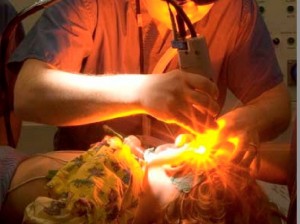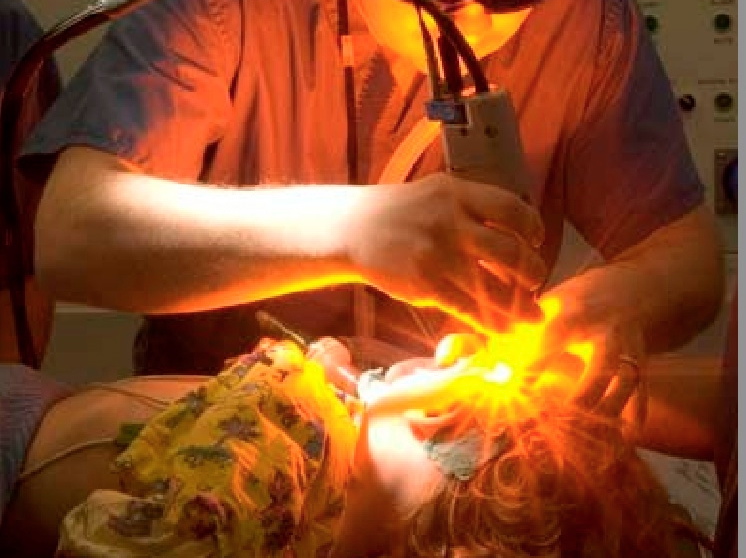Paget’s Disease: The Photodynamic Alternative to Surgery
Extramammary Paget’s disease (EMPD) is a rare, slow-growing, superficial form of skin cancer that occurs in the gland-bearing skin between the anus and the genitals in people over age 50. Technically classified as an adenocarcinoma, EMPD includes Paget’s disease of the vulva (in women) and Paget’s disease of the penis (in men). Some cases of EMPD are associated with a primary anal, rectal or bladder adenocarcinoma. The skin lesions are often mistaken as eczema, and can be red, itchy and quite painful.
In older men, EMPD develops on the skin of the penis and scrotal area (technically referred to as the penoscrotal area), though this condition is much rarer than the vulvar form that strikes women. In some cases, the cancer has spread through the skin by the time a diagnosis is established, and thus a skin graft is needed following surgery. Both photodynamic therapy (PDT) and the topical use of an immune-stimulating agent named imiquimod have been proposed as potentially effective treatments for EMPD.
In a recent case study, two patients with recurrent and widespread EMPD in the penoscrotal and groin area were treated with six cycles of PDT, followed by the topical use of imiquimod to help prevent a recurrence. After completing all treatments, both men showed a complete remission.
After three years of annual observations and skin tissue analyses, there was no sign of recurrence. The researchers concluded that combining PDT with imiquimod led to complete and lasting remissions of recurrent and extensive EMPD, as reported in the 19 March 2014 issue of Photodiagnosis and Photodynamic Therapy.
Boosting the Success of Surgery
In women, the most common site of EMPD is the vulva—a condition seen mainly in postmenopausal white women. The disease tends to spread silently, with the margins extending beyond the visible edges of the lesion. The main difficulty with surgery is that it may only remove and treat the visible signs of disease, and the risk of recurrences is very high. To overcome the limitations of surgery and prevent recurrences, researchers at St Michael’s Hospital in Bristol, UK, state in a new report for the Cochrane Database of Systematic Reviews that “it is essential to assess whether newer cell-specific treatments, such as photodynamic therapy and imiquimod, can reduce the need for radical surgery.”
As an example of how effective PDT can be in this context, researchers at the Shanghai Skin Diseases Hospital in Shanghai (China) recently enrolled 13 patients with large EMPD lesions. About half the group was assigned to surgery while the remainder received PDT prior to surgery. The PDT treatments used 20% 5-aminolevulinic acid (ALA-PDT) applied topically as a photosensitizer, and the patients were observed for one year.
The findings from this study were striking: The recurrence rate in the surgery alone group was 25%, compared to only 9% in the combined treatment group. Moreover, the combined treatment group achieved a near 60% reduction in lesion size after four PDT sessions. The Chinese research team concluded that ALA-PDT could be an effective way to reduce the severity of EMPD lesions and bolster the success of surgery, as reported in the July 2013 issue of Lasers in Surgery and Medicine.
Support us by buying our book, The Medicine of Light, and ebooks from our Photoimmune Discoveries eBook Series.
Source
Edey KA, Allan E, Murdoch JB, Cooper S, Bryant A. Interventions for the treatment of Paget’s disease of the vulva. Cochrane Database Syst Rev. 2013 Oct 26;10:CD009245. doi: 10.1002/14651858.CD009245.pub2.
Wang HW1, Lv T, Zhang LL, Lai YX, Tang L, Tang YC, Huang Z, Wang XL. A prospective pilot study to evaluate combined topical photodynamic therapy and surgery for extramammary paget’s disease. Lasers Surg Med. 2013 Jul;45(5):296-301.
© Copyright 2014, Photoimmune Discoveries, BV





 English
English Français
Français Deutsch
Deutsch Nederlands
Nederlands